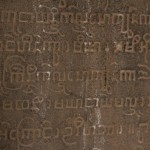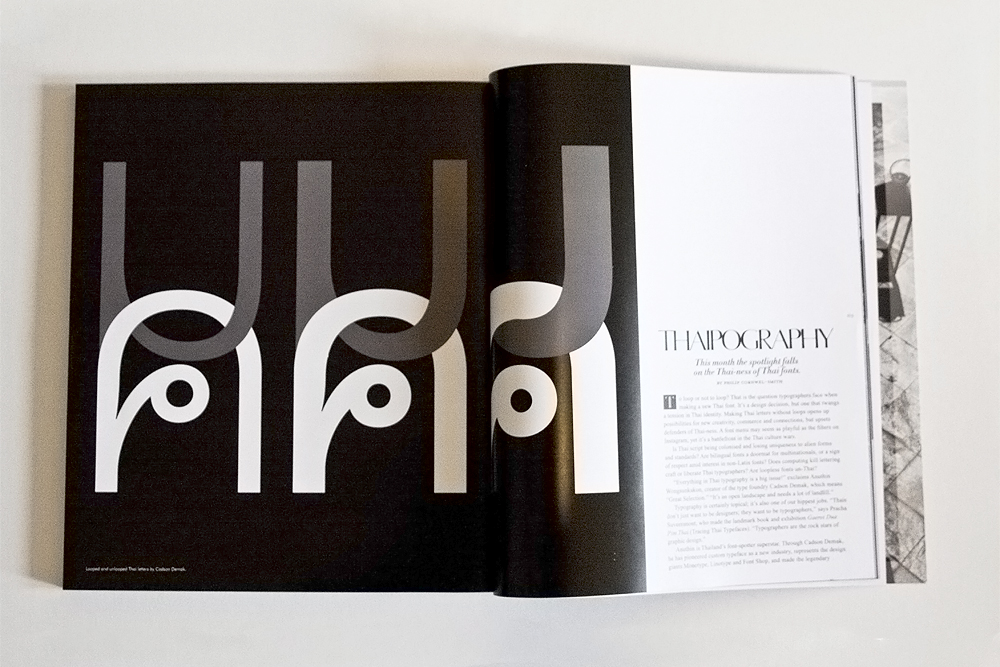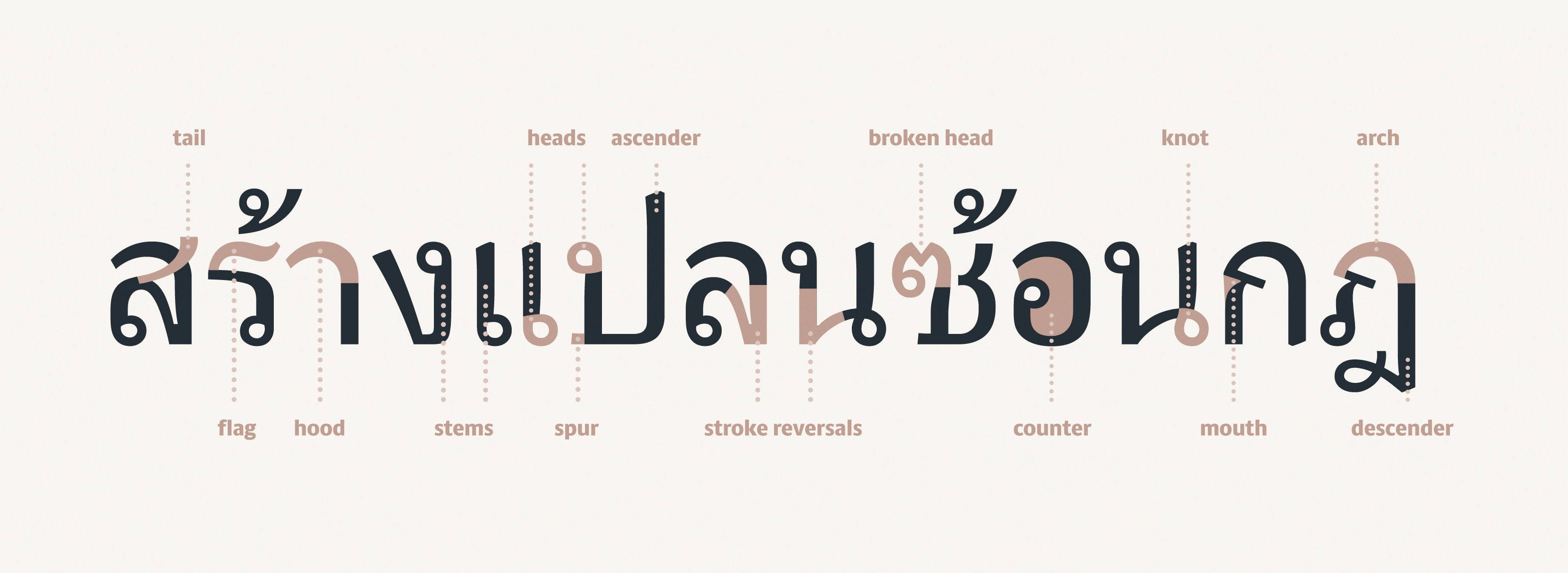Come and learn what to do and how, what not to do and even how what not to do, plus all the rest with our little team of font fanatics. We’ll be covering Thai, Lao, Burmese and Khmer with all the resources you need to get started on these scripts. And did we mention it’s by the beach in Hua Hin, Thailand? Continue reading
Tag Archives: Thai
Thai italics part 2 : Design
This post follows on from Usage, in which we found that italics in Thai are used slightly differently to their Latin counterparts. The two main discoveries were:
- Thai italics can stand alone as body text, even for long passages, unlike in Latin where they tend to be embedded in bodies of upright text.
- Thai italics are used for meta-text and to convey the ‘about’ voice. They are not for emphasis or names of things, which use bold instead.
Thai italics part 1 : Usage
The question of Thai italics has kept cropping up lately. In this two-part blog, I’m splitting the question into what are hoped to be digestible chunks. This post, Usage, talks about the ways that Thai typography uses italics differently to Latin, and tries to establish the principles underlying their use, and what implications there might be for the type designer. The second part, Design, will talk about a rationale for creating ‘true’ italics for Thai (not just sloped uprights or obliques), and will explore the possibilities of drawing on some of the traditional idioms of Thai penmanship. Continue reading
Figgins’ Pica Siamese
This wonderful font synopsis presents one of the earliest instances of the Thai script in printing type. Unfortunately there’s no accompanying information with the sheet, but Fiona Ross suggests it dates to between 1836 (when Vincent Figgins died and his business passed to his sons Vincent and James) and the 1880s (the latest date of type specimens under the name of V&J Figgins). Continue reading
Thaipography
In the Bangkok Post’s The Magazine, November 2014, Philip Cornwel-Smith discusses the complexities of typography in Thailand. The story includes interviews with Anuthin Wongsunkakon, Pracha Suveeranont, Roj Siam Ruay and some nice quotes from this blog. Download the full article Thaipography [ pdf] here.
Cornwel-Smith is a writer and journalist, whose bestselling book Very Thai celebrates the wonderful idiosyncrasies of Thai visual culture.
Thai press typography
This post is written in response to some of the questions people asked me about Thai typestyles last week at ATypI in Barcelona. Here I’m exploring looped and loopless styles by analysing current typographic practices in the Thai press. Continue reading
On loops and Latinisation
Introduction
This blog post has grown in the writing, as various emails, conversations and Twitter threads seemed to be pointing in a similar direction. For reasons we will explore, Thai script is often seen as an example of a writing system prone to Latinisation. Its looped and loopless styles are easy to interpret as traditional and Latinised, but does that interpretation stand up to critical scrutiny? Continue reading
Indic inscriptions
Gallery

A selection of inscriptions from early times showing Pallava and its evolution into proto-Thai and proto-Burmese. Images in chronological order. More on Flickr: Burmese or Thai inscriptions.
Thai workshop, Granshan 2014
Gallery

At this year’s Granshan Conference in Munich, I facilitated a workshop about designing Thai typefaces. We started with an introduction to the alphabet and how the letters combine to produce syllables, then went onto a matching exercise to teach participant … Continue reading

